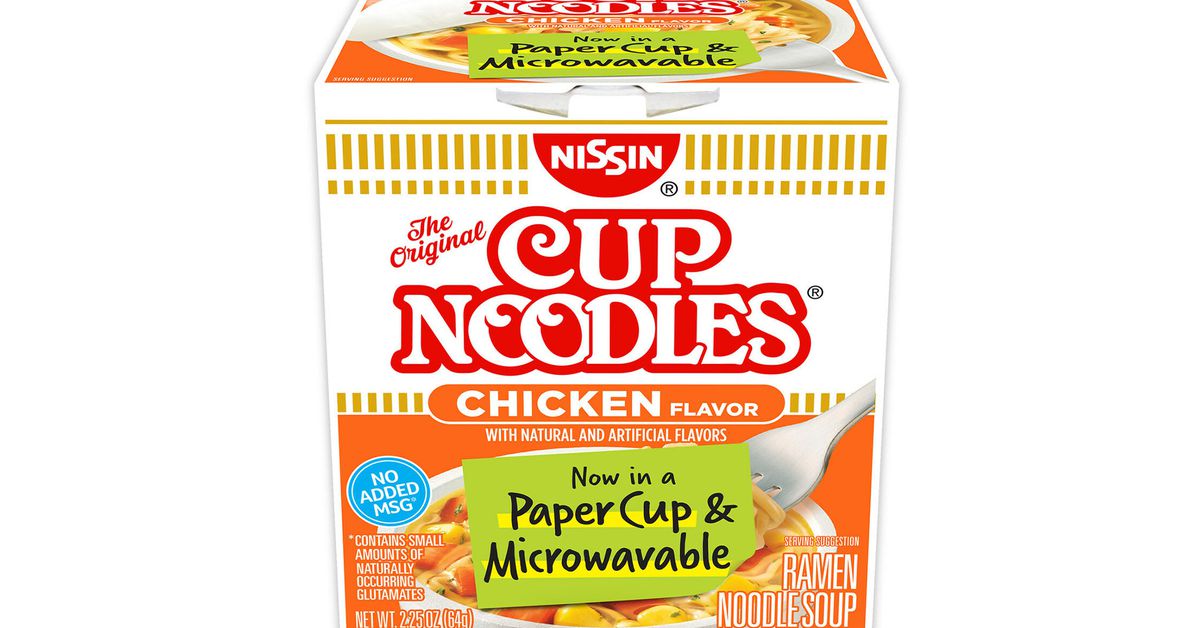/cdn.vox-cdn.com/uploads/chorus_asset/file/25055253/Nissin_Foods_70662_03003_Cup_Noodles_Chicken_Unit_JPEG.jpg)
Last week, Nissin announced that it was updating the design of its iconic Cup Noodles in early 2024. Instead of polystyrene, it’ll be made out of paper. Nissin also notes that thanks to the new packaging, its Cup Noodles will now be microwaveable. As in, you were never supposed to be microwaving Cup Noodles.
Cue chaos.
As it turns out, many people have not been reading labels when heating up Cup Noodles — a staple of college dorms, kitchen pantries, and many childhood memories. On social media, several people have been shocked to discover the original Cup Noodles were never meant for the microwave. Others are equally baffled that people have been microwaving Cup Noodles despite the the label clearly saying “Do not microwave.”
To be fair, some of the confusion may be specific to Nissin — the OG instant noodle brand — and this type of cup noodle. There’s a veritable cornucopia of instant noodle brands and containers. Some are microwavable and have been for a long time. It all depends on the instructions on the label.
Another source of confusion may also be the gadgets that we keep in our homes. For instance, electric kettles are not as common in the US as in Japan, where instant noodles were invented, or Europe. Yours truly grew up in an Asian American household where we microwaved instant noodles at home and used kettles when we visited family overseas. (And yes, I — and my entire family — have microwaved Cup Noodles for years prior to this rude awakening.)
But no, you’re not supposed to microwave polystyrene unless it comes with a microwave-safe label. Polystyrene is a popular food container because it’s light, cheap to make, and works well as an insulator to keep food warm. However, when heated, research shows substances within the polystyrene can leach into your food. The main cause for concern is styrene, which may impact the nervous system and is a possible carcinogen.
That said, you shouldn’t necessarily freak out if you have microwaved Cup Noodles in the past. Most studies of whether styrene causes cancer focus on people who work with the material, so more research needs to be done to see if there’s a link with food containers. A few instances of microwaving Cup Noodles aren’t likely to cause noticeable harm, but the effect of doing it consistently over time isn’t known — and is probably better to avoid going forward.
Microwaving polystyrene also compromises the structural integrity of Cup Noodles and can lead to burns if the container cracks. Recently, UChicago Medicine’s Burn and Wound Center published a study that discovered a third of childhood burns were caused by instant noodles. More specifically, the study’s authors said in a press release that the burns often occurred due to “inadvertent spills when removing containers from the microwave, along with spills while eating due to the narrow bases of instant noodle cups.”
But Nissin notes that the updated packaging is in large part, a “key step in our environmental commitment.” On top of being microwavable, the cup will now be made with 40 percent recycled fiber, no longer include plastic wraps, and have a 100 percent recycled paper sleeve. Polystyrene isn’t easily recycled, and local governments have taken measures to ban the material in recent years.
On the plus side, the new microwavable Cup Noodles also won’t make you wait for three minutes. The new design will “no longer require boiling water,” meaning you can shave 45 seconds off the heating time.
Services Marketplace – Listings, Bookings & Reviews
